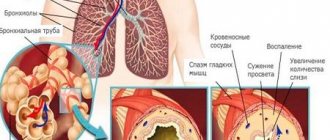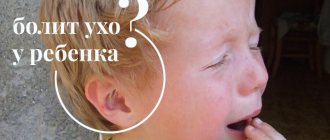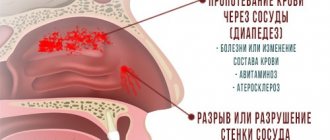After completing a course of treatment for pneumonia, patients are often bothered by a cough with difficult to expectorate sputum. To treat cough after pneumonia, pulmonologists at the therapy clinic use effective medications, physiotherapeutic procedures and physical therapy.
The Yusupov Hospital employs professors and doctors of the highest category, who are leading experts in the field of pulmonology.
Peculiarities
The most painful cough is a dry, non-productive cough, which occurs in most patients after pneumonia. It may persist for several days, but in some cases continues for a longer period of time. It is often caused by atelectasis and fibrosis of the lung tissue. A dry, unproductive cough is also observed in chronic inflammatory and allergic diseases of the upper respiratory tract, and bronchial asthma.
In patients with chronic cough, along with inflammatory infiltration, damage to the epithelium of the respiratory tract is observed. Exposure of the endings of sensory nerves when the epithelium is damaged also contributes to increased cough after pneumonia. A significant aggravating factor is exposure to airborne irritants. Cough after pneumonia is associated with environmental factors such as humidity in the home and air pollution. One of the common causes of prolonged cough is smoking.
Causes
Finding out the reasons why a cough persists for a long time after pneumonia is very difficult. At the Yusupov Hospital, patients undergo a comprehensive examination using modern devices from leading European and American manufacturers, innovative methods of clinical, biochemical and serological research.
For patients who are bothered by a cough after pneumonia, the following instrumental studies are performed:
- chest x-ray;
- study of external respiration function;
- computed tomography of the chest;
- tracheobronchoscopy.
Esophagogastroduodenoscopy, echocardiography, and X-ray examinations of the sinuses can help clarify the cause of cough. To identify atypical pathogens that support the inflammatory process, immunological studies are performed.
Make an appointment
Folk remedies
If you don’t want to overload your body with chemicals, you can use the gifts of nature to treat a cough. The following recipes bring relief: Recipe 1: Fresh cow's milk must be boiled with white figs. Take 2 times a day, 1 glass. Recipe 2: For it you will need bear or badger fat, which will need to be preheated in a water bath. The chest is rubbed with a small amount of melted fat and wrapped in a warm scarf. Recipe 3: Rosehip decoction is good for coughs. To prepare the drug you will need:
- a tablespoon of rose hips and pikulnik;
- 1 glass of cow's milk.
Add rose hips and pikulnik to 300 ml of boiling water. Leave the infusion for 50 minutes. After the specified time has passed, strain the liquid and mix with milk. Drink half a glass before meals 5-6 times a day.
To cure cough after pneumonia, complex therapy will be required. The specialist will prescribe appropriate medications (depending on the patient’s age and the nature of his disease). And folk remedies and massages will complement the treatment and make it even more effective.
Types of cough
In order to establish the reason why a cough remains after treatment for pneumonia, doctors at the Yusupov Hospital are finding out its characteristics. The cough can be loud or muffled, constant or paroxysmal. Some patients complain of a slight cough, while others have a severe cough.
Depending on the nature of the discharge, the following types of cough are distinguished:
- dry without discharge;
- with purulent sputum;
- with mucous sputum;
- with the presence of bloody streaks.
The cough reflex can occur in the morning, evening, and throughout the day. Coughing attacks can worsen in autumn, spring (during flowering plants) or winter under the influence of cold air.
Causes of coughing
If a cough remains after pneumonia, then, as a rule, this occurs for the following reasons:
- Lesions of bronchial tissue remaining after inflammation. In this case, the doctor will recommend continuing treatment until the disease is completely eliminated. You can also use folk remedies, for example, home inhalations with essential oils. The cough after pneumonia will disappear after a few days.
- Tissue damage due to the viral nature of the disease. It is important to monitor how long the cough lasts after pneumonia - if the disease was caused by a virus, then it will take about 10-14 days for the tissue to fully recover.
- Coughing may also be a residual phenomenon. If nothing else bothers the patient, then there is no need to worry, since the cough will go away on its own after a while.
- After suffering from pneumonia, as a complication, acute respiratory infections may occur, which, as is known, is accompanied by coughing. That is, in this case it is associated with a general weakening of the body.
If after pneumonia the cough does not go away for a long time (more than 2 weeks), then this is a reason to urgently contact a specialist.
Symptoms of pneumonia
The most characteristic signs of pneumonia are:
- cough, often accompanied by pain in the chest area;
- difficulty breathing (it is difficult for the patient to take a deep breath);
- the appearance of shortness of breath;
- increased body temperature;
- pallor of the skin.
Symptoms of pneumonia can masquerade as a cold. If such symptoms do not go away within a week or the condition improves for a short time, then it can be assumed that the patient is developing pneumonia.
The most unpleasant manifestation of pneumonia in children and adults is a constant cough, during which pain manifests itself. A person cannot lead his usual way of life, because coughing attacks debilitate him, especially at night. The disease also has a serious impact on the emotional state, since coughing attacks also occur while the patient is at work or simply in a public place.
A cough with pneumonia can be dry or wet. It all depends on the stage of the disease and the individual characteristics of each patient’s body. At first it is dry and very strong. Then the inflammation begins to spread, and the cough changes its character. It becomes moist, with mucus, and sometimes the discharge contains blood.
Although a wet cough is very unpleasant, its occurrence is a less alarming symptom than a dry cough. This is due to the fact that along with mucus, the airways are cleared of pus. A wet cough helps the patient recover faster. Intense and light sputum production prevents the occurrence of complications. If the body cannot cope with the production of sputum on its own, then the patient is prescribed special medications.
The only exception is when the sputum has a rusty tint. This indicates blood impurities, which are a dangerous symptom. The severity is determined by the causative agent of pneumonia.
A dry cough in itself is a dangerous symptom, since the airways are not cleared, and therefore the patient’s condition does not improve. Attacks of dry cough occur much more often than wet cough. It is very important to control a dry cough. Usually after a few days it becomes moist and relief occurs.
A characteristic feature of pneumonia in patients of any age is its duration. The cough may persist long after recovery because it takes time for the phlegm to be completely cleared.
If the cough does not go away for too long after a course of therapy, then it is necessary to undergo additional examination.
Make an appointment
Characteristic features of cough with pneumonia in children
Pneumonia is an inflammatory disease, which is most often accompanied by an infectious lesion of the respiratory system. The disease is characterized by high fever and chest pain. Cough due to pneumonia in children is also no exception. To make a correct diagnosis, a chest x-ray is prescribed.
Characteristics of cough
Detection of pneumonia at an early stage of development is an important point, which makes it possible to prevent serious complications and death of the patient.
Accumulated mucus in the bronchi and spreading bacteria in the bronchial epithelium lead to irritation of nerve receptors. Active impulses penetrate into the brain.
Thus, the body recognizes that pathological bacteria and viruses are multiplying in the respiratory organs, which need to be eliminated.
To determine what kind of cough a child has, it is necessary to have an idea of the types of cough and its relationship with inflammation of the lung tissue. If a connection is identified between cough and inflammation of the pulmonary parenchyma, treatment is prescribed.
Types of cough
Cough is a common defense of the body, resulting from various internal irritants. It can be:
- sputum;
- dust;
- foreign body.
This symptom brings unpleasant sensations, manifested by a sore throat, interfering with everyday life and eating. Often a cough exhausts a child’s body, especially at night.
It is also a discomfort that occurs during attacks in a group, which attracts the attention of others.
Therefore, treating cough with pneumonia is the main task, which requires the use of drugs to overcome the child’s painful condition.
It is quite easy to confuse different types of pneumonia with viral or cold diseases. Having an understanding of cough and its symptoms can help you make an accurate diagnosis.
There are the following types of cough:
- wet;
- dry;
- barking;
- spastic;
- staccato;
- whooping cough;
- with syncopation;
- bitonal;
- hoarse;
- spastic.
What kind of cough occurs with pneumonia? Initially it manifests itself in strong impulses, constant, dry and intrusive. Also, the manifestation of a dry cough is characteristic of bronchitis, inflammatory disorders of the pleura, tuberculosis, and enlarged lymph nodes.
It is determined by local irritation of the bronchial walls without the presence of sputum. The cough can be with blood masses, green spots during suppuration of chronic ailments.
These manifestations are characteristic of the initial stage of pneumonia caused by a viral infection with weakened immunity.
As inflammation develops, it turns into a strong, wet cough with copious amounts of mucus, which may contain pus and blood. This type of cough is productive.
It is better than a dry cough, because thanks to such a cough, you can free the lungs of waste material, which allows you to speed up the healing process. You cannot restrain instinctive reactions, as they make it possible to recover faster.
The pediatrician will definitely prescribe medications that help thin the mucus and improve its retreat.
It is worth paying attention to the release of sputum with blood, which may indicate a symptom of local inflammation. When treating, the doctor will take into account the patient’s predisposition to the occurrence of a mixed infection.
Children's cough
The incubation period in a child with pneumonia begins with a dry cough lasting 3 days with a transition to a wet cough. Such signs appear at the stage of acute infiltration; X-rays show an infiltrative focus at the epicenter of the lung fields.
Also, the child is characterized by spastic coughing impulses against the background of broncho-obstructive syndrome. Due to the weak protective function of the body, a child may experience spasmodic coughing, which is characterized by its intrusiveness, reduced productivity, and whistling sounds.
A hoarse cough develops with inflammatory disorders of the ligaments. In case of inflammation of the respiratory system, it is associated with the separation of sputum mixed with blood.
With the development of viral inflammation of the respiratory system, symptoms of a barking cough may be present. This is a cough with a metallic sound, unaccompanied by sputum. The symptoms of the disease are similar to whooping cough in a child. When, with the passing of each attack, irritation of the oral mucosa appears with a small amount of viscous mucus, this leads to a subsequent attack.
Bitonal manifestation of cough impulses is observed in the complicated development of pneumonia, when ulcers and wounds that have whistling passages appear in the lung tissue.
A whooping cough is quite strong and continuous. It often contributes to vomiting. The child experiences convulsive breaths and a strong whistling sound.
Atypical inflammation of chlamydial manifestations is characterized by a staccato cough. The cough is very loud, jerky, and is often combined with rapid breathing. This type of cough never develops with fever.
A cough with syncope is accompanied by loss of reason for some time. This is due to increased venous inflow and increased pressure within the chest with a decrease in cardiac output.
Symptoms of the disease
One of the common consequences of influenza and colds is pneumonia. A caring parent will be able to determine the occurrence of inflammation himself if he knows what symptoms children exhibit with this disease.
Respiratory failure
First of all, it is a change in the natural respiratory process that will indicate the possible occurrence of inflammation of the respiratory system in a child. You will see that the child has to make an effort to inhale and strain the auxiliary muscles.
In infants, shortness of breath is accompanied by head nodding with each breath. Possible respiratory arrest.
In case of illness, breathing occurs as follows:
- superficial;
- rapid;
- arrhythmic;
- noisy;
- whistling.
As you exhale, you can hear a groan.
A characteristic sign of the disease in a child is rapid breathing. You must call a doctor immediately.
- 1. If a child under 2 months old hears 60 or more breaths.
- 2. A child aged 2 to 12 months takes 50 or more breaths.
- 3. In children older than one year, 40 or more breaths are heard.
If you undress a child, you will notice how, when inhaling, depressions form in the middle of the ribs in place of the diseased lung. This condition is inherent in pneumonia, especially at a later stage of development.
Increased temperature
Pneumonia is characterized by a persistent rise in temperature to high levels. Sometimes you can observe that the child began to feel better, and then the temperature rose to 38 degrees and did not go away for several days. Various attempts to lower the temperature are limited to short-term results or do not bring any effect at all.
Together with other symptoms of pneumonia, it should be a reason to contact a specialist who will examine the child and prescribe appropriate treatment to determine the disease.
In case of a cold, if the temperature persists for more than 3 days, there is a possibility of pneumonia.
Cough
Pneumonia is almost always accompanied by a cough. Lung damage is manifested by a continuous cough, sputum is difficult to separate. It is almost impossible to clear your throat. This brings discomfort and suffering. The attacks recur quite often. However, some types of the disease have a rare cough or it does not manifest itself at all.
If your child's lungs are affected, you may hear groaning sounds. The chest swells. Foamed mucus comes out of the mouth and nasal passages. If pneumonia occurs, interstitial foamy mucus may be mixed with blood.
Atypical pneumonia develops with a predominance of a dry cough, it is hacking and painful. An older child may complain of pain in the sternum, under the rib, when he coughs and in the absence of a cough.
Skin changes
Local manifestations of inflammation of the respiratory system include pale skin. During the period of screaming, crying or breastfeeding, the baby will turn blue around the nose and mouth. This is especially true for infants under one year old.
Severe cases of the disease are manifested by an earthy tint to the skin.
Other signs of illness
Pneumonia can also occur without pronounced symptoms. There are cases when the inflammatory process is hidden, which prevents the disease from being diagnosed correctly and increases the risk of pneumonia becoming chronic.
Lung damage can begin to develop with banal signs of a cold. At the same time, shortness of breath and high temperature for several days should alert responsible parents.
In addition, experts identify a sufficient number of types of disease, which differ from each other in symptoms and causes of development. The development of the disease depends not only on the pathogen that caused it, but also on the age category of the patient.
Signs of lung damage in children can appear singly or in different combinations. Not all of the existing symptoms may occur in one case or another. Therefore, the child must be shown to a specialist if at least one symptom is noticed.
Treatment of the disease
Treatment for pneumonia begins when the first signs are detected . When examining the child, the doctor will determine, based on a number of conditions, where the therapy will take place, at home or in a hospital setting.
- Age of the patient – children under one year of age must be hospitalized.
- The severity of the condition.
- Presence or absence of accompanying diseases.
When treating pneumonia, you must follow the following rules:
- proper patient care;
- rational nutrition and drinking regimen;
- diet;
- bed rest.
use of antibacterial agents, inhalation with medications to combat cough.
Pneumonia therapy does not go away without taking a course of antibiotics. Mild and moderately severe forms of the disease are treated with tablets. In severe forms, injections are prescribed.
- Penicillins - ampicillin, ammox, amoxiclav.
- Cephalosporins – ceftriaxone, cefuroxin, cephalexin.
- Macrolides – aziromycin, erythromycin.
During antibiotic therapy, prebiotics and probiotics are prescribed to prevent dysbiosis.
- Linux.
- Hilakforte.
- Lactobacterin.
To get rid of a cough and restore normal airway patency, the patient will need inhalations, mucolytic and expectorant medications. Inhalations using antiseptic solutions and bronchodilators are carried out to prevent the development of the disease. Thanks to the procedure, breathing becomes easier, sputum is diluted and comes out with relief.
The patient may cough even after recovery. Then inhalations with medications will help.
After the condition improves, the child is prescribed restorative therapy..
- Complex of vitamins.
- Immunostimulants.
- Physiotherapy.
- Massotherapy.
- Breathing exercises.
Prevention of the disease consists of timely treatment of colds, foci of infections, increasing the body’s protective function, which includes the use of vitamins, a diet rich in vitamins and nutrients, hardening, and walks in the fresh air.
Source: https://ProLegkie.com/pnevmoniya/deti/xarakternye-osobennosti-kashlya-pri-pnevmonii-u-detej
Pneumonia without cough
In some cases, pneumonia occurs without a cough. This is very dangerous because the body is not cleared of mucus and phlegm. A cough serves as a signal of inflammation in the upper respiratory tract.
When the cough is not severe, patients try to treat it themselves, but they do not seek professional medical help. This is very dangerous, since improper treatment can aggravate the course of the disease, lead to serious complications and transform the disease into a chronic form. In this case, the cough reflex becomes unproductive, that is, unable to rid the bronchi of phlegm and mucus. Subsequently, the patient develops pneumonia without coughing with the appearance of greenish sputum mixed with pus.
Causes of cough after pneumonia
Cough after pneumonia is a common condition encountered by patients. It can occur in the presence of any of the pathogens. Its intensity is usually pronounced. At the initial stages it is dry, later it often turns into wet with an admixture of green tint and an admixture of bloody streaks.
In order for the intensity and nature of the cough to change, active anti-inflammatory therapy is required. As the severity of inflammation decreases and tissue regeneration improves, the cough becomes less intense. In addition, the patient needs time to remove the secretions accumulated in the tissue of the alveoli and bronchi.
Residual effects
The persistence of cough in children after they have had pneumonia is a fairly common manifestation. This symptom can be associated with several reasons.
Among them are:
- Preservation of small foci of inflammatory reaction in the bronchial tree. In the bronchi, the pathological process can persist for a longer time, therefore, with the restoration of general well-being and improvement of laboratory parameters, as well as the x-ray picture, small localized areas can provoke irritation in the bronchi. Impact on the mucous membrane provokes the appearance of a reflex cough.
- Long-term regeneration of lung tissue. The recovery of lung tissue is most difficult after pneumonia caused by a viral agent. The patient's dry cough continues for one or two weeks after the main course of therapy is completed. The most pronounced cough persists against the background of a general decrease in the immune system and a protracted course of pneumonia. If the clinical picture does not improve, and the child’s cough persists and bothers him for a long time, it is necessary to exclude the development of a relapse.
- Insufficient formation of pulmonary structures. In children under two years of age, the pulmonary system is characterized by insufficient tissue formation. In order to prevent the disease from becoming chronic, as well as to eliminate complications, it is necessary to include in the treatment plan not only a combination of medications, but also massage, as well as physiotherapeutic procedures aimed at maximizing tissue restoration. Of great importance in therapy are drugs with an expectorant mechanism of action, which prevent the accumulation of sputum in the lungs.
- Incomplete elimination of the focus of the inflammatory reaction. The persistence of cough may be caused by the lack of effect of the therapy, as well as late seeking help. Transition of the disease into a chronic form. When inflammation spreads to neighboring sections, including bronchial tissue, a protracted course may occur.
Badger fat for pneumonia: instructions for use
In order to assess residual effects and choose the most appropriate tactics, it is necessary to monitor such characteristics as:
- Duration of preservation after the full course of treatment.
- Sound type. The cough may be loud or accompanied by wheezing with varying degrees of severity.
- Reflex strength. In some cases, it is enough for the patient to cough one time in order to improve his health, or the patient experiences a constant cough of an exhausting nature.
- Presence of sputum with determination of its type. This may be purulent or mucous sputum, as well as mixed with blood streaks.
- Conditions and time of its development. The cough may appear in the morning or evening, but in some cases it bothers the patient constantly.
- Identifying connections with the time of year.
Complications
The development of complications caused by the insufficient effect of the therapy, as well as the presence of resistance to the therapy with the possible appearance of chronic foci of inflammation. These conditions are quite rare in children.
The most common complications caused by the appearance of cough after pneumonia include:
- Insomnia. Cough leads to regular waking up at night, as well as difficulty falling asleep. The patient experiences malaise, constant weakness, and increased fatigue.
- Vomiting, which is a reflex mechanism for indomitable coughing.
- Development of urination or defecation that does not bring relief.
- Pelvic or abdominal hernia.
- Pneumothorax.
To prevent the development of complications, it is necessary to promptly select therapy and assess the dynamics of well-being with a possible change in treatment.
Treatment
After determining the cause of the cough, doctors at the Yusupov Hospital carry out therapy aimed at eliminating it. Patients are taken off medications that can cause a cough reflex, eliminate contact with the allergen, and undergo antibacterial therapy for chronic inflammatory lung diseases.
For a nonproductive cough, medications are prescribed that help restore the physicochemical properties of sputum and improve the drainage function of the bronchi. To remove sputum, drugs that stimulate expectoration and mucolytics are used. Secretomotor drugs enhance the physiological activity of the ciliated epithelium and the peristaltic movements of the bronchioles, promote the movement of sputum from the lower parts of the respiratory tract to the upper and its elimination. They can have a reflex or resorptive effect.
Reflex agents include thermopsis, marshmallow, sodium benzoate, terpin hydrate. When taken orally, they have a moderate irritant effect on the receptors of the gastric mucosa, which stimulates the vomiting center of the medulla oblongata. As a result, the secretion of the salivary glands and mucous glands of the bronchi increases. Sodium and potassium iodide, ammonium chloride, and sodium bicarbonate have a resorptive effect. These drugs are absorbed in the gastrointestinal tract, secreted by the mucous membrane of the respiratory tract, stimulate the bronchial glands and cause direct sputum thinning.
Mucolytic drugs thin the sputum, which helps reduce its viscosity and facilitate evacuation. There are three groups of mucolytic drugs:
- proteolytic enzymes;
- amino acids with SH group;
- mucoregulators.
Proteolytic enzymes thin the mucus, making it easier to separate. However, doctors at the Yusupov Hospital do not use drugs from this group, since they can provoke hemoptysis, bronchospasm, and allergic reactions.
Amino acids with an SH group reduce the viscosity of mucus. This group includes acetylcysteine and carbocysteine. Mucoregulators have mucolytic and expectorant effects. They stimulate the regeneration of ciliated cells of the ciliated epithelium and increase its activity. Representatives of this group are ambroxol and bromhexine.
How long does a cough last for pneumonia in children?
Pneumonia is a serious infectious disease, untimely or improper treatment of which is fraught with serious consequences.
In childhood, the disease is accompanied by fever, cough, shortness of breath and other symptoms, although sometimes a hidden form of the disease is observed. A large number of combinations of signs of inflammation creates certain difficulties in diagnosis.
Therefore, knowing what cough occurs with pneumonia in children will allow parents to seek medical help in time.
Cough with pneumonia in a child
Features of symptoms
Being one of the common signs of pneumonia, cough appears in the first days after infection. At first, the reflex has a dry, unproductive character.
As soon as the secretion begins to separate, the cough becomes wet. Unlike colds, the secretion released in this way consists of mucus, pus and blood clots.
In some cases, doctors diagnose green streaks in the sputum.
Due to a weak immune system, other types of cough are observed with pneumonia in children:
- Intrusiveness, low productivity and a characteristic whistling sound characterize the spastic type reflex.
- If the doctor observes a hoarse cough in a child, he will warn about the presence of disorders in the ligaments.
- A symptom with a metallic sound and lack of sputum is defined as a barking cough. It is associated with the viral nature of the disease.
- Pneumonia may also cause a whooping cough. In this case, it manifests itself in the form of severe attacks with a slight release of viscous sputum and residual irritation of the mucous membranes. In some cases, the symptom can cause vomiting.
- The formation of ulcers and fistulous tracts gives the syndrome a bitonal character.
- A sign of atypical chlamydial inflammation is a staccato cough. Its sonority and abruptness are combined with rapid breathing and the absence of high temperature.
- One of the severe manifestations of pneumonia is a cough with syncope (fainting). It is often accompanied by increased blood circulation, increased blood pressure and temporary loss of reason.
These symptoms are rare and are considered signs of complications. Therefore, pneumonia should be identified and treated in the early stages in order to achieve a faster recovery.
Causes of cough with pneumonia
Since the immune system in children is not strong enough, it more often suffers from the invasion of pathogenic microflora. If it enters the respiratory system, it can easily excite the laryngeal nerve.
As a result, mucus begins to accumulate in the lungs, becoming a breeding ground for viruses and bacteria.
And if the population of infectious agents is not eliminated, they gradually begin to spread throughout the body, aggravating the course of the disease.
Mucus in the lungs
Mucus in the respiratory tract becomes a serious nuisance for the body. Therefore, he begins to use the cough reflex as a natural way of removing phlegm. And while the secretion is in a viscous state, its release is difficult.
The cough reflex is inextricably linked with difficulty breathing. Shortness of breath in children under two months is recorded if the doctor hears more than 60 breaths per minute. Before the age of one year, the lower limit is 50 breaths. In a preschool child, a deviation is considered to be a frequency of inputs above 40.
After about 3 days, the mucus thins and begins to leave the respiratory tract. After the pathogen is eliminated, coughing may continue for some time, this is due to the removal of secretions containing dead microorganisms from the body.
According to medical practice, pneumonia in children is cured within 2-3 weeks, and if there are complications, the process can drag on for several months.
Age, immune status and severity of the disease will influence how long treatment will last in each individual case.
How to treat cough with pneumonia in children
To eliminate the symptoms of the inflammatory process in the lungs, the quality of the treatment is important.
Depending on the patient’s age, his current state of health, and the presence of complications, it is carried out at home or in a hospital.
Therapeutic measures include taking medications that eliminate the causative agents of inflammation, as well as drugs to combat cough. All efforts will give a good effect, provided that:
Bed rest
- rules of care and hygiene;
- proper diet and drinking;
- prescribed diet;
- bed rest.
For pneumonia, antibiotics in the form of tablets or injections are first prescribed. Medicines from the group of penicillins, cephalosporins and macrolides have proven effective against pneumonia. Depending on the diagnostic results, the pediatrician himself will select the safest and most effective means for treatment.
To avoid the symptoms of dysbiosis, prebiotics and probiotics are used simultaneously. For the treatment of children, Linex, Hilak Forte or Lactobacterin are often recommended. Destroying the main colony of microorganisms will reduce symptoms. However, to ensure a long-term effect of therapy, the course should be completed completely.
Cough syrup Flavamed
If pneumonia is accompanied by a dry cough, medications are required to suppress the reflex, as well as to thin the mucus. In the first case, the doctor may prescribe Flavamed, Glaucine or Codeine.
Their use is discontinued as soon as it is time to stimulate the removal of sputum.
To perform another task, it is necessary to use mucolytic drugs in the form of tablets, syrups or capsules.
As soon as sputum begins to separate, expectorants are needed. The list of recommended medications includes ACC, Bronholitin, Mucaltin. To eliminate cough and facilitate the respiratory process, it is recommended to carry out inhalation procedures using antiseptics or bronchodilators.
Source: https://detsad14elochka.ru/skolko-dlitsja-kashel-pri-pnevmonii-u-detej/
Physiotherapeutic treatment
At the Yusupov Hospital, patients who still have a cough after pneumonia are prescribed the following physiotherapeutic procedures:
- inhalation;
- UHF;
- magnetic therapy;
- electrophoresis.
Inhalations are performed using nebulizers and ultrasonic inhalers. Mucolytic drugs, glucocorticoid hormones, and antiseptics are administered by inhalation method. UHF physiotherapy activates the immune system, eliminates inflammation and reduces cough. Magnetic therapy eliminates inflammation and helps stimulate metabolic processes. When performing electrophoresis, an electric current interacts with the solution introduced into the patient's body. The drug is quickly delivered to the site of the disease. With the help of electrophoresis, the fastest removal and dilution of sputum is achieved.
An effective procedure that reduces the severity of cough after pneumonia is massage. In addition, complex therapy includes physical therapy. During the exercises that are included in the complex, sputum discharge improves and the bronchial tree is cleared of mucus, which helps reduce cough.
The complex treatment includes procedures that increase the overall reactivity of the body:
- warming compresses;
- salt and pine baths;
- circular shower;
- wiping with warm water.
If your cough does not go away after pneumonia, call the Yusupov Hospital. You will be scheduled for an appointment with a pulmonologist. After the examination, the doctor will prescribe a comprehensive effective treatment.
Make an appointment
Author
Effective Treatments
To select appropriate drug therapy, it is important to understand the causes of coughing, as well as study its nature. That is, if a cough is a symptom of a new developing disease, then therapy should be aimed at combating it. And if coughing is only a residual phenomenon, then it would be correct to treat it. If a child or adult has a dry cough after pneumonia, the following remedies will help:
- Expectorant medications. This group of drugs is prescribed to thin sputum, so that a dry, barking cough after pneumonia will become moist and productive.
- Special massage. It is worth consulting on this issue with your doctor, who will show you the basic techniques used for massage procedures. Rhythmic tapping on the back and chest helps remove mucus and significantly speeds up recovery.
- Treatment of bronchospasm. If the cough after pneumonia is strong enough, the person seems to be suffocating and cannot take a breath, then it is important to use medications that relieve vasospasm. The dosage is selected individually by the doctor.
- Warming up. You can sign up for procedures at a clinic, or carry them out at home. To do this, you will need to heat sea salt (in crystals) in a frying pan, then pour it into a fabric bag - leave a similar compress on your chest until it cools. This procedure is used to treat cough after pneumonia in a child - it is important to repeat it daily until the symptoms of the disease completely disappear.
If the cough is wet, you should thin the sputum. Only then will she be able to leave the respiratory tract without problems (along with the infection). To do this, you need to take drugs with expectorant and mucolytic effects. As an example: Lazolvan, Bromhexine and others. If you cannot cope with coughing this way, your doctor may prescribe antibiotics.
The choice of a particular antibiotic is based on the severity of the patient's condition.
Usually, with proper treatment, coughing goes away within 6-8 days.










